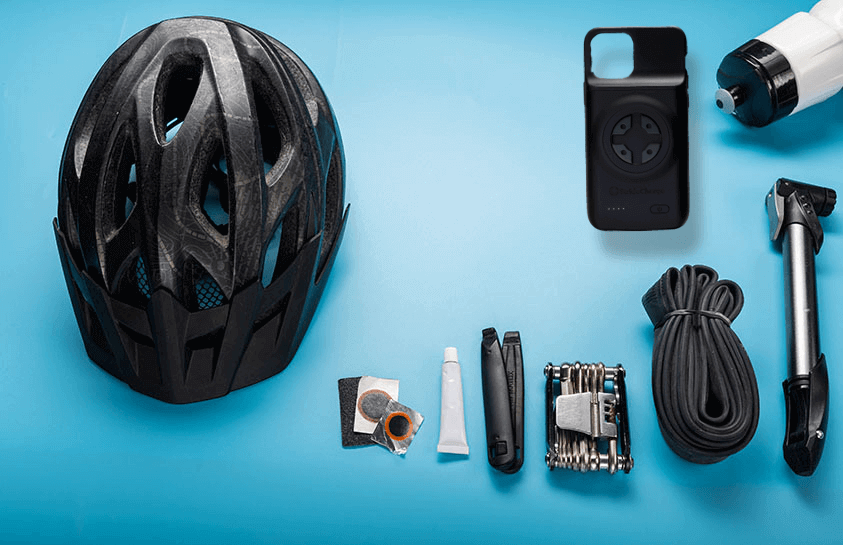Are you a cyclist looking to unlock your full potential? If so, base training cycling is the key to building a strong aerobic foundation, improving endurance, and preparing for more intense workouts. In this blog post, we will explore the essentials of base training cycling, techniques and strategies for building your aerobic base, and tips for maximizing your base training benefits. Let’s get started on the road to unlocking your cycling potential!
Key Takeaways
- Base training cycling provides a strong foundation for cyclists to improve their performance.
- It focuses on developing aerobic fitness and endurance through low-intensity rides, with the ultimate goal of achieving peak performance.
- Incorporating strength training, recovery, flexibility exercises and race day strategies can help maximize base training benefits.
The Essentials of Base Training Cycling

Every cyclist aiming to boost their performance should consider base training for cyclists. By focusing on high-quality training, incorporating training stress, and honing bike handling skills, base training lays the foundation for more advanced training plans.
Not only will building base miles and establishing a strong aerobic foundation enhance your cycling performance, but it will also set the stage for future intense workouts.
Defining Base Training
Base training is a foundational phase in cycling that focuses on developing aerobic fitness and endurance through steady, low-intensity rides. By consistently riding in Zone 2, which is 56 to 75 percent of your Functional Threshold Power or 65 to 75 percent of your maximum heart rate, you’ll increase your aerobic threshold and capacity to sustain steady-state work for an extended period.
Endurance athletes, especially elite endurance athletes, should not overlook this as it paves the way for better race day performances. Traditional base training and the Sweet Spot approach are two popular methods to build a solid aerobic base. Whichever method you choose, the goal is to build a solid foundation for peak performance during the racing season.
The Role of Aerobic Fitness in Cycling
Cycling performance heavily relies on the aerobic energy system, which includes aerobic fitness and aerobic capacity, enabling riders to sustain higher speeds with less effort, recover swiftly, and efficiently complete long rides. Training one’s aerobic threshold is an essential component of endurance sports. It is even more crucial than training the anaerobic threshold.
Raising the aerobic threshold can bring several benefits. You can travel longer and faster with less blood lactate build-up, as well as fewer feelings of tiredness and fatigue. This allows for an extended period of exhaustion..
The distribution of training intensity significantly influences the process of training intensity distribution, making structured training plans and appropriate exercise intensity integral to constructing a robust aerobic base.
Establishing a Strong Foundation
Establishing a strong foundation through base training is key to unlocking your full potential as a cyclist and preventing injury. With consistent implementation of training and aerobic endurance rides, it takes approximately three years to construct a solid foundation for cycling.
This foundation not only maximizes your potential and prevents injury but participating in group rides during base training can also be a motivating and educational experience, thanks to interaction with seasoned cyclists.
Building Your Aerobic Base: Techniques and Strategies

Utilizing the appropriate techniques and strategies is vital in constructing a strong aerobic base. Zone 2 training, structured training plans, and balancing intensity and volume are essential for maximising aerobic base training benefits and ensuring continued improvement in cycling performance.
Mastering these techniques and strategies sets you on the path to tapping into your full cycling potential.
Zone 2 Training
Zone 2 training involves long, steady rides at a low intensity to improve aerobic fitness and increase fat utilization as fuel. By training in Zone 2, you’ll be able to conserve your limited carbohydrate reserves for when they are most needed, such as during high intensity efforts.
Whether you choose to train with a power meter or heart rate monitor, maintaining a consistent effort in Zone 2 is key to building a solid aerobic base. Optimizing the benefits of Zone 2 training by setting achievable goals, tracking your progress, and making necessary adjustments propels you towards attaining peak cycling performance.
Structured Training Plans
Structured training plans help cyclists stay on track and progressively build their aerobic base over time. By carefully scheduling periods of rest, one or two high intensity interval training (HIIT) sessions per week, and lengthy Zone 2 training sessions, you’ll ensure that your training plan is tailored to enhance your aerobic threshold.
Adherence to a structured training plan maintains your motivation and consistency, in addition to amplifying the benefits of your base training endeavors.
Balancing Intensity and Volume
Balancing intensity and volume is crucial for maximizing base training benefits and preventing overtraining. By focusing on training at low intensities, such as Zone 2, you’ll improve your aerobic threshold and lactate clearance, which are essential for endurance sports. Limiting high intensity efforts during base training is also important, as it prevents the destruction of vascular capillaries that are being developed during this period.
Maintaining a balance between intensity and training volume guarantees the efficacy of your base training and sustains the progression towards your cycling objectives.
Fine-Tuning Your Training Plan

To maximize the benefits of base training cycling, fine-tuning your training plan is a necessary step. Here are some tips to help you:
- Set realistic goals.
- Adapt your training plan to fit your schedule.
- Monitor your progress regularly.
- Make adjustments as needed. By following these steps, you’ll be able to continue making progress towards your cycling objectives.
In this section, we’ll discuss strategies for setting goals, adapting your training plan, and monitoring progress to ensure your base training is as effective and efficient as possible.
Setting Realistic Goals
Setting realistic goals is crucial for staying motivated and focused on your base training objectives. When establishing goals, consider your current fitness level, the amount of time available for training, and the type of cycling you want to focus on. By setting achievable and measurable goals tailored to your individual needs and abilities, you’ll ensure that your base training efforts are both effective and enjoyable.
For example, if you’re a beginner cyclist, your goal might be to ride
Adapting to Your Schedule
To maintain consistency and avoid burnout, it’s vital to adapt your training plan to fit your schedule. By being flexible and tailoring your training plan to suit your schedule, you’ll ensure that your base training remains effective and enjoyable.
Whether you have limited time to train or need to accommodate other commitments, being adaptable and adjusting your plan as needed will help you stay on track and achieve your cycling goals.
Monitoring Progress and Adjusting as Needed
Monitoring your progress is crucial for ensuring that your base training efforts are effective and efficient. By tracking your progress with a training log or app, and using the data to make adjustments to your training plan, you’ll be able to fine-tune your efforts and continue making progress towards your cycling goals.
Additionally, paying attention to how you feel during and after your workouts will help you adjust your plan as needed, ensuring that your base training remains effective and enjoyable.
Incorporating Strength Training and Recovery

To boost overall performance and prevent injuries, it’s crucial to integrate strength training and recovery into your base training program. By focusing on functional strength training for cyclists and allowing your body to repair and adapt through active recovery and rest days, you’ll ensure that your base training efforts are both effective and enjoyable.
In this section, we’ll discuss the importance of strength training and recovery, as well as strategies for incorporating these elements into your base training program.
Functional Strength Training for Cyclists
Functional strength training for cyclists focuses on exercises that directly benefit cycling performance and improve overall strength. By targeting the muscles used in cycling, such as the glutes, hamstrings, and core, functional strength training can improve power, speed, and endurance, as well as reduce the risk of injury.
Additionally, incorporating upper body exercises such as push-ups and pull-ups can further enhance your cycling performance. To get the most out of your strength training, aim to perform two to three sessions per week, each session lasting 30-45 minutes.
Active Recovery and Rest Days
Active recovery and rest days are crucial for allowing your body to repair and adapt to the stresses of base training. Engaging in low-intensity activities on rest days, such as:
- walking
- swimming
- cycling
- yoga
- light stretching
can facilitate muscle recovery and reduce soreness.
By incorporating active recovery and rest days into your base training program, you’ll ensure that your body has the necessary time to recover and adapt, ultimately leading to improved cycling performance and injury prevention.
Flexibility and Mobility Exercises
Flexibility and mobility exercises play an important role in preventing injury and improving overall cycling performance. By incorporating exercises that increase the range of motion and movement of the joints, such as child’s pose to downward-facing dog, frog pose to deep squat, and chest and shoulder opener, you’ll enhance your flexibility, decrease stiffness, and improve overall joint function.
Including flexibility and mobility exercises in your base training program is essential for maximizing your cycling performance and minimizing the risk of injury.
Tips for Maximizing Base Training Benefits

The maximization of base training benefits involves participating in group rides, maintaining motivation, and surmounting common challenges. By utilizing these tips, you’ll ensure that your base training efforts are as effective and enjoyable as possible.
In this section, we’ll discuss strategies for group rides, staying motivated, and overcoming common challenges encountered during base training.
Group Rides and Social Support
Group rides and social support can help cyclists stay accountable and motivated during base training. Participating in a group ride, especially a long ride, not only provides a sense of camaraderie and community, but also allows you to learn from experienced cyclists and improve your bike handling skills.
In addition to group rides, seeking support from friends, family, or online cycling forums can help you stay motivated and focused on your base training objectives.
Staying Motivated and Consistent
Staying motivated and consistent is key to reaping the full benefits of base training and improving cycling performance. Here are some tips to help you stay on track:
- Establish achievable goals.
- Monitor your progress regularly.
- Adapt your training plan as necessary. By following these steps, you’ll ensure that your base training efforts remain effective and enjoyable.
Additionally, incorporating strength training and recovery into your regimen can aid in maintaining motivation and consistency.
Overcoming Common Challenges
Overcoming common challenges, such as time constraints and weather conditions, is essential for maintaining progress during base training. By remaining flexible and adaptable, you can adjust your training plan to suit your schedule and the challenges you face.
Moreover, seeking support from friends, family, or online cycling communities can help you stay motivated and focused on your base training objectives.
Winter Base Training: Making the Most of the Off-Season

Winter base training, also known as winter training, enables cyclists to utilize the off-season effectively by concentrating on indoor training, investing in cold weather gear, and following safety tips. By taking advantage of the winter months, you can maintain your base training and ensure a smooth transition into racing season.
In this section, we’ll discuss indoor training options, cold weather gear and safety tips, and strategies for maintaining progress throughout the off-season.
Indoor Training Options
Indoor training options, such as stationary bikes and trainers, offer several benefits for cyclists during the winter months:
- You can maintain your base training without having to brave the cold weather.
- You have control over your environment, including temperature and terrain.
- You can track your progress with greater precision, using metrics such as power output and heart rate.
Training indoors allows you to stay consistent with your cycling routine and continue improving your fitness, even when outdoor conditions are less than ideal.
Cycling apps like Zwift and Rouvy are a great way to stay in shape. If you pair your phone to your T.V. when using a cycling app, then you most likely run in to the big problem of your phone battery draining. It is very inconvenient to finish your Zwift or Rouvy session with a dead phone. If you experience this problem, then you should get a bike phone mount and phone charge case so you can keep your phone mounted to your bike and wirelessly charge it.
Incorporating indoor training into your base training program during the winter months can help you stay on track and continue making progress towards your cycling goals.
Cold Weather Gear and Safety Tips
Cold weather gear and safety tips help cyclists stay warm and safe during outdoor winter rides. By investing in:
- Thermal base layers
- Insulated jackets
- Hats
- Gloves
- Scarves
- Boots
You’ll ensure that your body stays warm and protected from the elements.
In addition, reviewing the weather forecast before heading out for a ride and being prepared for sudden changes in temperature or weather conditions will help you stay safe and comfortable during your winter base training rides.
Maintaining Progress Throughout the Off-Season
Maintaining progress throughout the off-season ensures a smooth transition into race season and continued improvement in cycling performance. By focusing on your base training and incorporating indoor training options, cold weather gear, and safety tips, you’ll ensure that you stay on track and continue making progress towards your cycling goals even during the winter months.
Indoor training options can include spin classes, stationary bikes, and virtual cycling apps. Cold
Preparing for Race Season: Transitioning from Base Training

The transition from base training to race season encompasses the intensification and specificity of training, tapering and peaking, and the implementation of race day strategies. By focusing on these aspects, you’ll ensure a smooth transition into race season and continued improvement in cycling performance.
In this section, we’ll discuss strategies for building intensity and specificity, tapering and peaking, and race day strategies and tips.
Building Intensity and Specificity
Building intensity and specificity in your training plan prepares cyclists for the demands of race season and improves overall performance. By advancing the duration and intensity of intervals, as well as including more specific drills and exercises in your training plan, you’ll ensure that your training is tailored to the unique requirements of your desired racing events.
Tapering and Peaking
Tapering and peaking allow cyclists to reach their peak performance just in time for race day. By gradually decreasing the intensity of your workouts in the weeks leading up to a race, you’ll allow your body to rest and recover while preserving its fitness level.
This will enable you to perform at your best on race day and achieve your cycling goals.
Race Day Strategies and Tips
Race day strategies and tips help cyclists navigate the challenges of competition and perform at their best. By having a pre-determined plan for the race, such as regulating your pace, ensuring proper nutrition and hydration, and maintaining concentration, you’ll ensure that you’re fully prepared for the demands of race day.
Additionally, having a plan for post-race activities, including cooling down and stretching, will help you recover more effectively and set the stage for continued improvement in your cycling performance.
Summary
In conclusion, base training cycling is the key to unlocking your full cycling potential. By focusing on the essentials of base training, building your aerobic base, fine-tuning your training plan, incorporating strength training and recovery, and maximizing base training benefits, you’ll set the stage for improved performance and continued growth in your cycling abilities. With the right plan, motivation, and dedication, you can achieve your cycling goals and enjoy the journey along the way. Now, it’s time to get out there and start building your aerobic base!
Frequently Asked Questions
What is cycling base training?
Cycling base training is a form of exercise that is focused on establishing a foundation of fitness, strengthening the aerobic energy system, and allowing cyclists to reach their physiological potential for a goal event. It is typically completed in the Base Phase of a training plan.
How do I build my base for cycling fitness?
To build your cycling fitness, incorporate long rides once a week and other interval workouts into your routine. Include higher intensity workouts in moderation, along with strength training exercises, to progress your base-building period and improve aerobic capacity.
When should I start base training?
If you're training for an event, start your base training twenty-eight weeks before your event to give yourself enough time to complete the full progression.
What is Zone 2 training cycling?
Zone 2 training cycling is used to build the 'base' and is typically characterized by long and steady rides ranging from 1 to 4 hours in duration. This same intensity should be used when riding long, steady endurance rides.
What are the benefits of incorporating strength training and recovery into a base training program?
Strength training and recovery are key elements in optimizing performance, avoiding injury and allowing the body to repair itself. These benefits make them invaluable components of any base training program.




Leave a comment
This site is protected by hCaptcha and the hCaptcha Privacy Policy and Terms of Service apply.